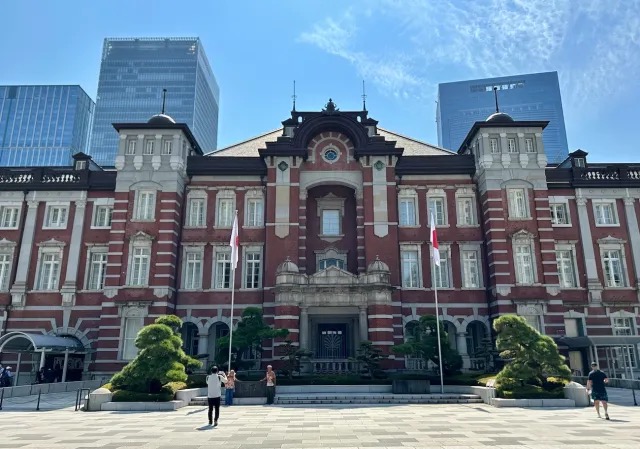
A fascinating link to the city’s ancient past…if you know where to find it.
Tokyo Station is a major railway hub filled with crowds of commuters but it’s also a beautiful work of architecture with links to the past in the ground…and in its walls.
Not a lot of people know about the secrets hiding at the station — even our reporter Masanuki Sunakoma didn’t know about all of them, until a friend of his brought it to his attention the other day. According to his friend, a fossil was recently found in one of the station’s walls, and while it looks like a crab it’s actually an ancestor of the crab that became extinct about 30 million years ago.
Upon hearing that, Masanuki was keen to see it for himself, so he headed out to Tokyo Station to find it. He started his quest at the Marunouchi South Exit, which has a beautiful domed interior.
When you visit here, your eyes might naturally rise up to admire the dome, but you should also take a moment to look at the ground near the ticket office, where you’ll find this mysterious marker.
A plaque in Japanese beside the mark reveals that this is the site where Prime Minister Hara Takashi was attacked on 4 November 4, 1921. Prime Minister Hara was stabbed in the right side of his chest with a dagger and was treated at the station master’s office, but it’s said that he died almost instantly.
▼ This marker has been embedded in the floor to mark the site of the incident.
Masanuki’s next step was to head to the Shinkansen North Transfer area, where another marker can be found on the floor just before a short flight of stairs. This is the site where Prime Minister Hamaguchi Osachi was shot on 14 November 1930. While he survived the attack, he died from complications related to his injury the following year.
From here, it’s not too far to the fossilised crab — simply go up the short stairs pictured above and then down the short stairs at the Shinkansen South Exit area. According to Masanuki’s friend, once you see “Ecute Tokyo” in front of you (brown sign, below), you’re in the right area.
Masanuki was told to look for the “ごまたまご” (“Goma Tamago” or “Sesame Egg”) sign on one of the pillars here in front of the South Transfer area but he wasn’t able to see it immediately.
▼ No Goma Tamago or crab fossil here…
▼ There was a Chocolat Hiyoko chick on this pillar, but no crab here…
▼ Baum Kuchen Nenrinya? Nope…
▼ Turning around, he finally spotted it — Goma Tamago, the famous sweet souvenir from Tokyo!
▼ Now all he had to do was look carefully on the wall to the left of this sign…
▼ Huh? Where is it?
▼ OMG it’s right there!
It was hard to make out, and even harder to photograph, but once you look closely, you can see it’s definitely a crab — the outline and raised claws are undeniable. Apparently, a man with an interest in fossils first spotted the crab while waiting in the area for his wife around two years ago, and since then it’s been confirmed as an extinct ancestor of the crab by a fossil museum curator.
It’s not the only fossil to be discovered in a stone wall in Tokyo, as other specimens have been found at places such as the Mitsukoshi department store in Nihonbashi, the Odakyu department store in Shinjuku and the Tobu Department Store in Ikebukuro.
▼ This is the first discovery of a crab-shaped fossil, though, which makes it particularly exciting.
If you need more help finding the location, it’s here on one of these pillars between Ecute and the South Transfer area. Fortunately, the pillars that were once hidden when this Street View was taken are now visible to the public so you’ll be able to find it.
Who knew there was such an exciting discovery hidden on a random wall at Tokyo Station? We certainly didn’t, and lots of people still aren’t aware of its existence. So next time you’re in the area, be sure to check it out — it’s just one of many hidden gems hiding in plain sight at the station…for those who know how to find them.
Photos ©SoraNews24
● Want to hear about SoraNews24’s latest articles as soon as they’re published? Follow us on Facebook and Twitter!
[ Read in Japanese ]

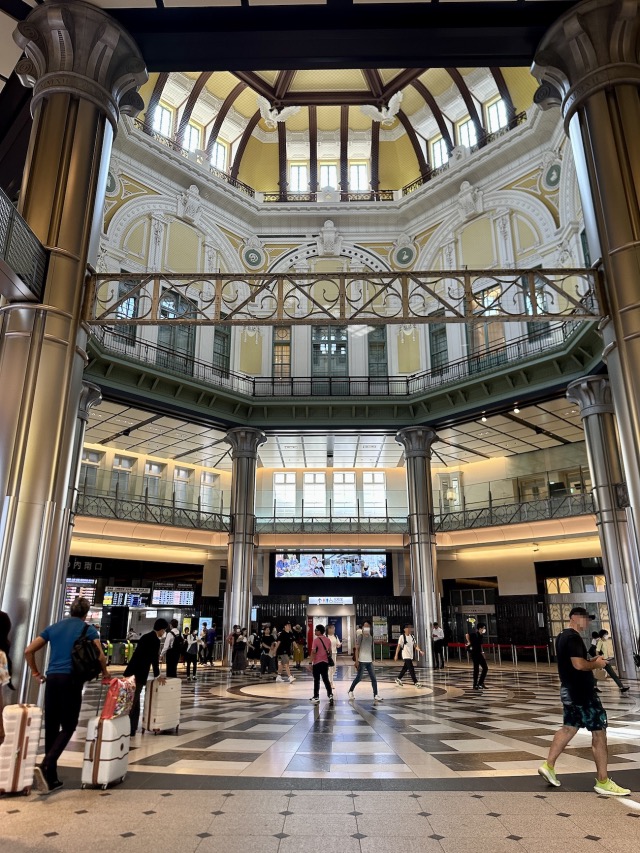
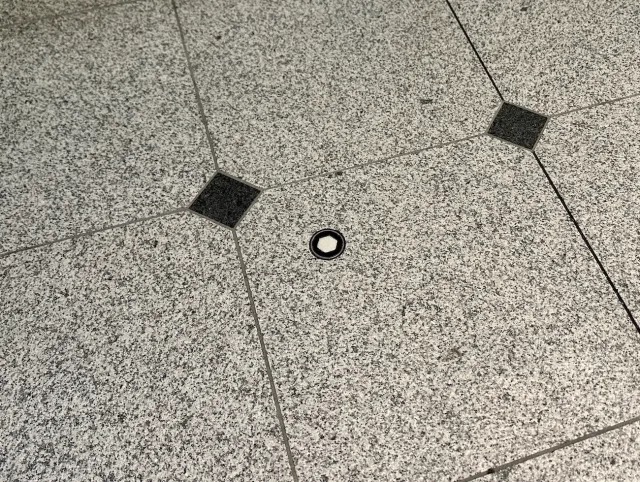
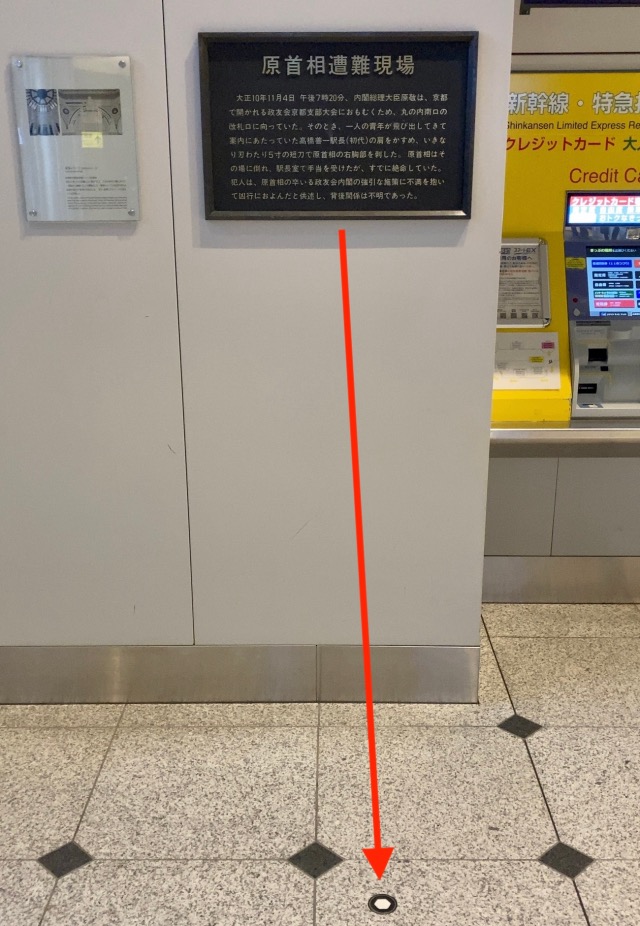
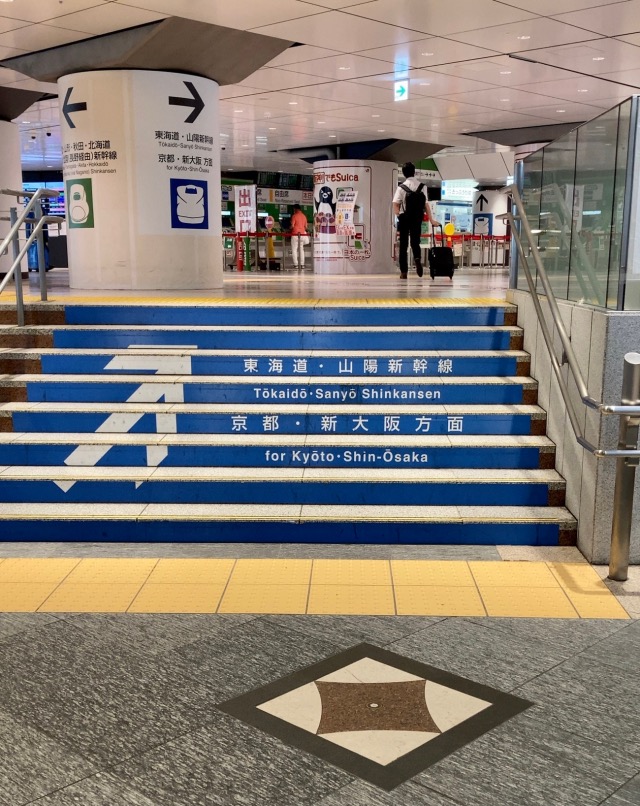
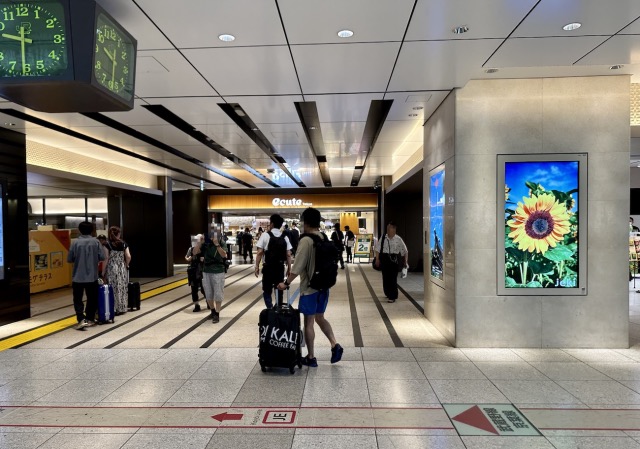
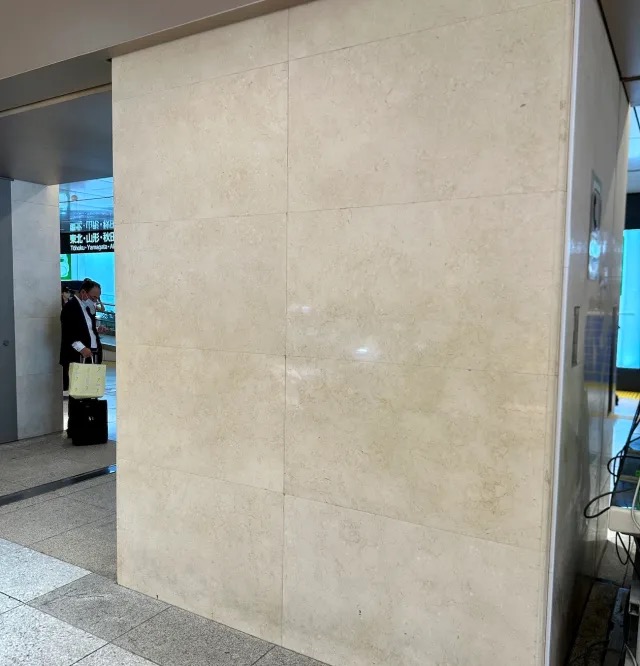
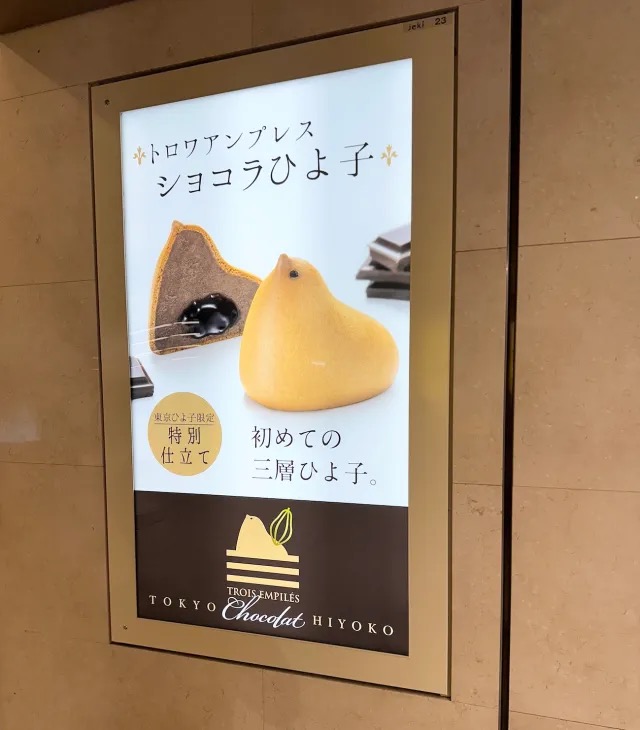
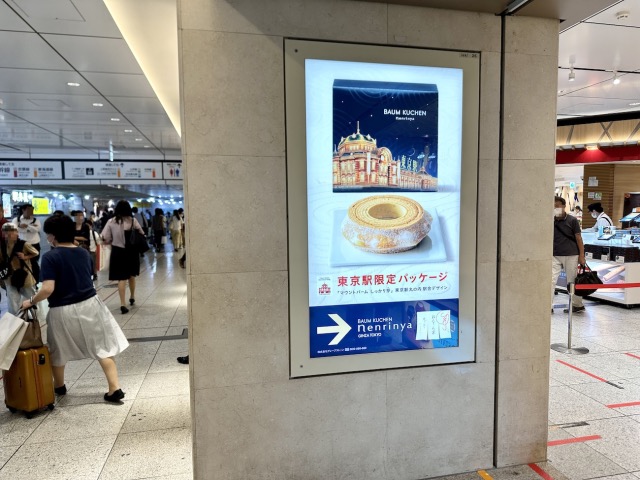
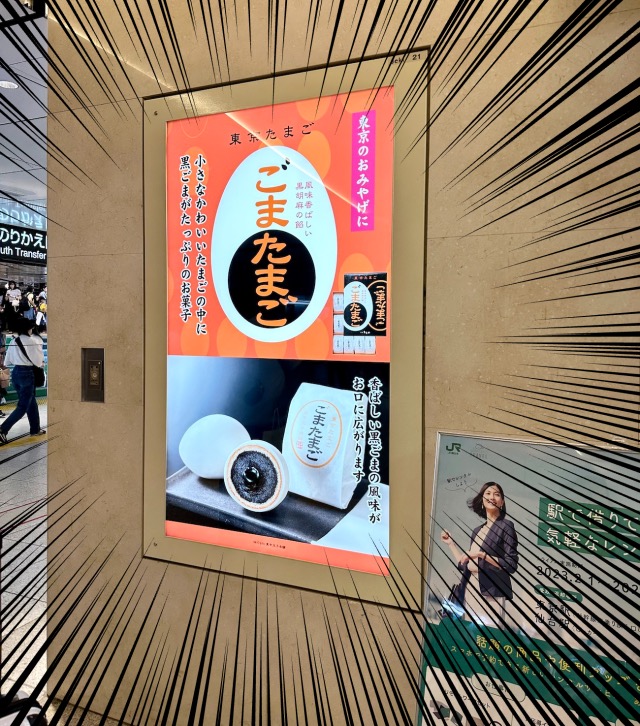
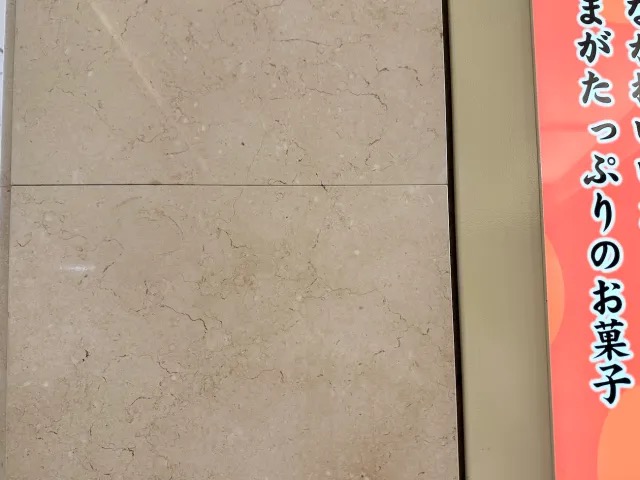
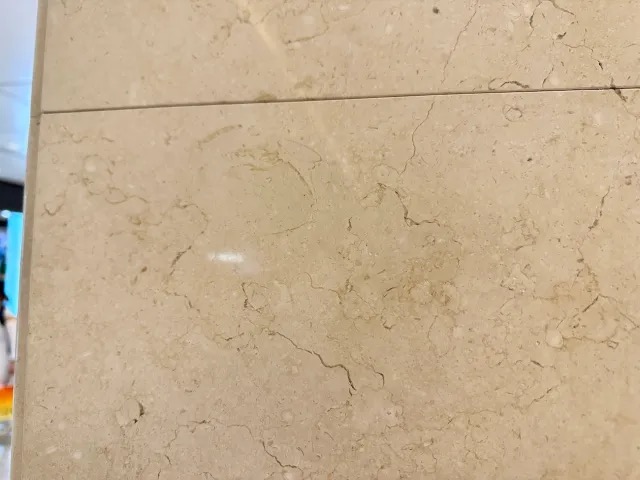
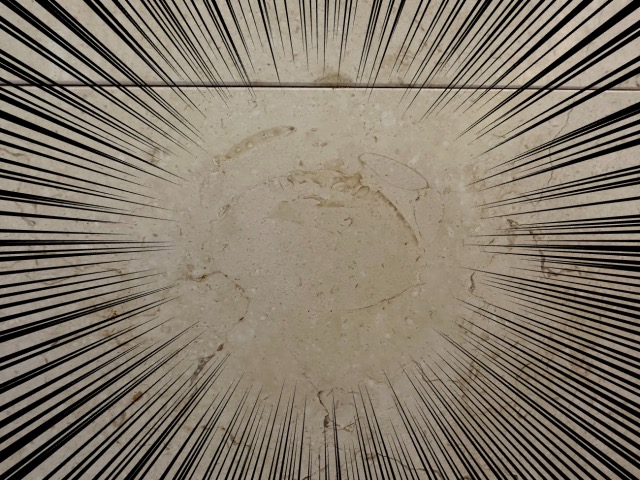
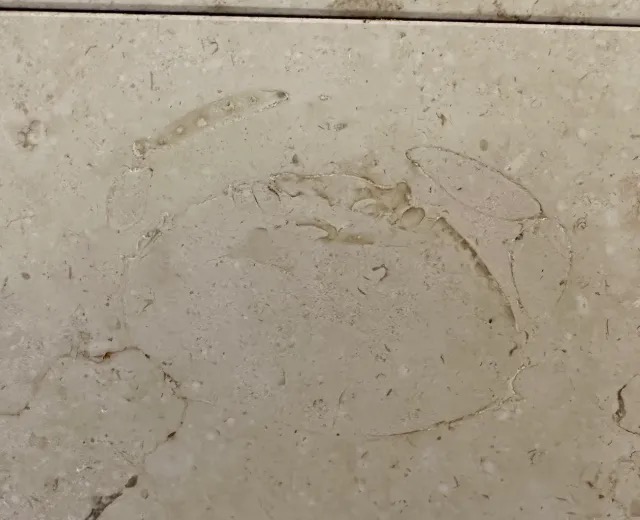
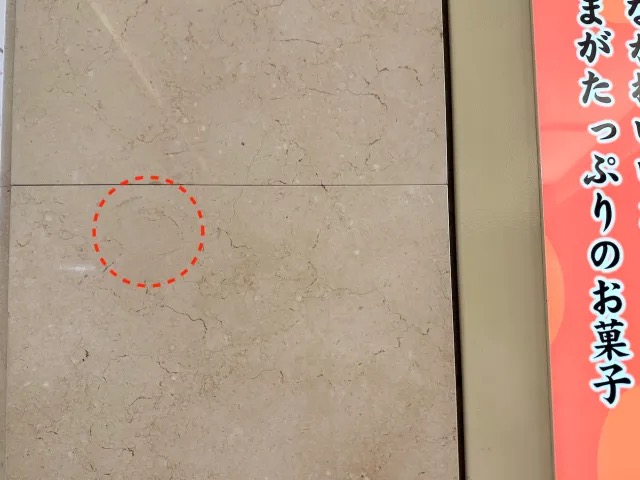
 The blood-soaked meaning behind the mysterious marks on the floor at Tokyo Station【Photos】
The blood-soaked meaning behind the mysterious marks on the floor at Tokyo Station【Photos】 Is that restaurant in Tokyo with the giant mecha crab sign any good?
Is that restaurant in Tokyo with the giant mecha crab sign any good? Three great indoor date spots (plus a bonus!) in Tokyo, for when the weather just won’t cooperate
Three great indoor date spots (plus a bonus!) in Tokyo, for when the weather just won’t cooperate Crabs take over electric signboard at Japanese train station
Crabs take over electric signboard at Japanese train station We try “Chilli Crab Seafood Noodle” — Nissin’s new cup noodles with a Singaporean twist【Taste Test】
We try “Chilli Crab Seafood Noodle” — Nissin’s new cup noodles with a Singaporean twist【Taste Test】 Where’s the happiest place for foreigners to live in Japan? Study investigates
Where’s the happiest place for foreigners to live in Japan? Study investigates Sushi Bears restaurant opens in Tokyo, offers exactly what its name promises【Photos】
Sushi Bears restaurant opens in Tokyo, offers exactly what its name promises【Photos】 One Japanese man has eaten at the same beef bowl restaurant for over 1,800 days in a row
One Japanese man has eaten at the same beef bowl restaurant for over 1,800 days in a row Secret-identity J-pop singer Ado to hold handshake event with surreal setup to hide her face
Secret-identity J-pop singer Ado to hold handshake event with surreal setup to hide her face Starbucks Japan is calling it quits with paper straws
Starbucks Japan is calling it quits with paper straws Is Burger King Japan sending subliminal messages in its packaging for the new “Top” One Pounder?
Is Burger King Japan sending subliminal messages in its packaging for the new “Top” One Pounder? Yamagata cherries fetch record-breaking price at wholesale market’s first auction of the year
Yamagata cherries fetch record-breaking price at wholesale market’s first auction of the year Studio Ghibli heroine cardigans give you warmth and strength to face everyday challenges
Studio Ghibli heroine cardigans give you warmth and strength to face everyday challenges Why are people moving in droves to Fukuoka Prefecture? We asked someone who did for some insight
Why are people moving in droves to Fukuoka Prefecture? We asked someone who did for some insight Biking around Tama Lake: A super-easy, super-relaxing afternoon getaway from downtown Tokyo【Pics】
Biking around Tama Lake: A super-easy, super-relaxing afternoon getaway from downtown Tokyo【Pics】 J-pop mega star Ado reveals she’s been living in the U.S., may not understand language acquisition
J-pop mega star Ado reveals she’s been living in the U.S., may not understand language acquisition Japan’s most popular castle raising ticket prices by up to 200 percent for non-local tourists
Japan’s most popular castle raising ticket prices by up to 200 percent for non-local tourists Daiso has giant new branch in middle of Tokyo’s Shinjuku neighborhood (and another beneath it)
Daiso has giant new branch in middle of Tokyo’s Shinjuku neighborhood (and another beneath it) Japan’s top 10 food travel destination prefectures【Survey】
Japan’s top 10 food travel destination prefectures【Survey】 Tough times for Japanese pubs as izakaya bankruptcies come at highest rate in more than a decade
Tough times for Japanese pubs as izakaya bankruptcies come at highest rate in more than a decade Studio Ghibli coasters keep your drinks hot and your heart warm this winter
Studio Ghibli coasters keep your drinks hot and your heart warm this winter Furikake rice seasoning sales are soaring, which is bad news for Japan as a whole
Furikake rice seasoning sales are soaring, which is bad news for Japan as a whole Studio Ghibli releases new Totoro and Jiji hourglass timers in Japan
Studio Ghibli releases new Totoro and Jiji hourglass timers in Japan Possessing Harry Potter’s Sword of Godric Gryffindor is now illegal in Japan
Possessing Harry Potter’s Sword of Godric Gryffindor is now illegal in Japan One of Japan’s most beautiful hot spring towns announces new limits on number of day trippers
One of Japan’s most beautiful hot spring towns announces new limits on number of day trippers Uniqlo announces first-ever collaboration with horror manga master Junji Ito【Photos】
Uniqlo announces first-ever collaboration with horror manga master Junji Ito【Photos】 Ghibli’s Princess Mononoke teams up with Foxfire for outdoor apparel collaboration【Photos】
Ghibli’s Princess Mononoke teams up with Foxfire for outdoor apparel collaboration【Photos】 Studio Ghibli releases new range of cardigans for anime fans
Studio Ghibli releases new range of cardigans for anime fans Japanese job-quitting service contacted by other job-quitting service because employee wants to quit
Japanese job-quitting service contacted by other job-quitting service because employee wants to quit McDonald’s new Happy Meals offer up cute and practical Sanrio lifestyle goods
McDonald’s new Happy Meals offer up cute and practical Sanrio lifestyle goods Foreign tourists on Shinkansen bullet train break suitcase etiquette, angering local passengers
Foreign tourists on Shinkansen bullet train break suitcase etiquette, angering local passengers [Deleted] Article written for April Fool’s Day 2018
[Deleted] Article written for April Fool’s Day 2018 Japanese government to make first change to romanization spelling rules since the 1950s
Japanese government to make first change to romanization spelling rules since the 1950s Foreigner’s request for help in Tokyo makes us sad for the state of society
Foreigner’s request for help in Tokyo makes us sad for the state of society Japanese convenience store Family Mart announces abolishment of eat-in spaces
Japanese convenience store Family Mart announces abolishment of eat-in spaces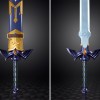 Life-size vibrating Legend of Zelda Master Sword for sale from Nintendo【Photos】
Life-size vibrating Legend of Zelda Master Sword for sale from Nintendo【Photos】 Princesses, fruits, and blacksmiths: Study reveals the 30 most unusual family names in Japan
Princesses, fruits, and blacksmiths: Study reveals the 30 most unusual family names in Japan Studio Ghibli releases free-download board game — Here’s how to play it without reading Japanese
Studio Ghibli releases free-download board game — Here’s how to play it without reading Japanese Japan’s crab ice cream is here to test how much you really love seafood and sweets
Japan’s crab ice cream is here to test how much you really love seafood and sweets Secret hot spring onsen in Japan is a hidden gem waiting to be discovered by tourists
Secret hot spring onsen in Japan is a hidden gem waiting to be discovered by tourists The cool secret hidden in Tokyo Metro pillars at Ginza station
The cool secret hidden in Tokyo Metro pillars at Ginza station Imitation crab meat shrine built in Kobe
Imitation crab meat shrine built in Kobe Dominique Ansel Bakery Japan now offering Singapore Crab… as an exquisite dessert! 【Pics】
Dominique Ansel Bakery Japan now offering Singapore Crab… as an exquisite dessert! 【Pics】 Tottori airport serves crab soup from a faucet and… Dammit Seiji, put down that plastic bottle!
Tottori airport serves crab soup from a faucet and… Dammit Seiji, put down that plastic bottle! Hit Japanese app Crabhouse forced to change name on iOS
Hit Japanese app Crabhouse forced to change name on iOS Unlimited kushiage skewers, stewed oden, and booze at this Tokyo restaurant for under 20 bucks
Unlimited kushiage skewers, stewed oden, and booze at this Tokyo restaurant for under 20 bucks That moment when Google Maps tells you there’s a crab claw somewhere…and there actually is!
That moment when Google Maps tells you there’s a crab claw somewhere…and there actually is! We order a “Mystery Lucky Bag of Imperfect Goods” through Amazon, end up with a pile of crab
We order a “Mystery Lucky Bag of Imperfect Goods” through Amazon, end up with a pile of crab Tokyo farewells Japan’s only double-decker Shinkansen with a special escalator at the station
Tokyo farewells Japan’s only double-decker Shinkansen with a special escalator at the station Our Japanese reporter’s experience with crawfish in the US left him stunned
Our Japanese reporter’s experience with crawfish in the US left him stunned We try Starbucks Japan’s grand finale for the year: The triple-sesame Frappuccino【Taste test】
We try Starbucks Japan’s grand finale for the year: The triple-sesame Frappuccino【Taste test】 Taste testing 7-Eleven Japan’s five frozen curries to see which ones nail it
Taste testing 7-Eleven Japan’s five frozen curries to see which ones nail it Sushi store makes waves in Japan for meal with a surprising 14-character katakana name
Sushi store makes waves in Japan for meal with a surprising 14-character katakana name
Leave a Reply